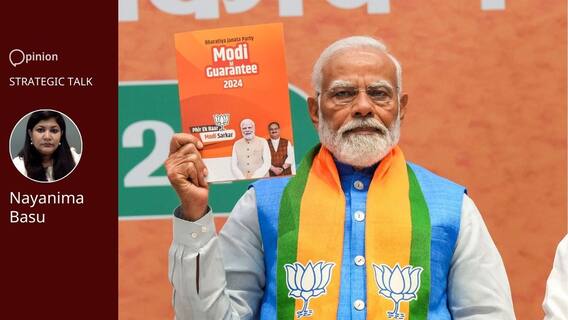
Opinion| Rulers And Power: A Parable In Two Chapters

The 14th-century Sultan of Delhi, Muhammad Tughluq, was by all accounts a stern, puritanical, and yet generous ruler, characterized above all by capriciousness and a brutal exercise of power. Perhaps the most reliable and certainly one of the most detailed narratives of his rule comes from the hand of ibn Batuta, a Moroccan traveler who spent six years at the Sultan’s court. Ibn Batuta observes at the outset that “this king is of all men the most addicted to the making of gifts and the shedding of blood.” Over the next thirty pages, ibn Batuta details the gifts that the Sultan showered upon nobles but especially foreigners, following it up with gruesome accounts of the punishments he meted out to those who dared so much as to disagree with him.
It is, however, ibn Batuta’s account of the devastation that Tughluq wrought upon Delhi, then and now a capital city, that is utterly riveting. Its citizens, agitated by the Sultan’s bloodthirsty ways, “used to write missives reviling and insulting him,” and one day he decided by way of retaliation to lay the entire city to waste. He issued an edict commanding all of Delhi’s residents to abandon their city and make their way to Daulatabad, a thousand miles to the south, where the Sultan proposed to set up a new capital. Ibn Batuta writes that he dispersed his slaves throughout Delhi to ensure that everyone had complied with his order. They dragged into the streets two men who had gone into hiding, “one of them a cripple and the other blind.” The cripple was flung from a mangonel, and the blind man was dragged from Delhi to Daulatabad, “a distance of forty days’ journey.” Pieces of the blind man fell along the way; at journey’s end, “all of him that reached Daulatabad was his leg.” Meanwhile, in Delhi, the Sultan reportedly looked out upon the city from the roof of his palace, and seeing “neither fire nor smoke nor lamp”, exclaimed: “Now my mind is tranquil and my feelings are appeased.” Two years later, as if in palpable demonstration of the dictum that under despotism the life, limb, and liberty of no one barring the despot is secure, Tughluq ordered everyone in Daulatabad to march back to Delhi.
Present-day India has its own Muhammad Tughluq. His name is Narendra Modi. The Indian Prime Minister is known for being obsessive about power. He runs the country, many allege, like his personal fiefdom and brooks no dissent. His management of the coronavirus pandemic is now recognized all over the world—and even among a few in the BJP, though few dare to say as much in public—as a catastrophic dereliction of duty. He has been disdainful of scientific expertise and there is increasing indeed overwhelming experience that warnings of the deadly second wave which has left the country reeling, the object of pity and concern everywhere in the world, were ignored by him and his ministers. India has recorded nearly 4000 deaths for several days running and, as this is being published, the virus is making deep inroads into towns and villages. Yet, earlier this year, the Prime Minister triumphantly announced that India had not only conquered the virus, but had quite evidently set an example for the rest of the world.
Much else binds the Sultan of the 14th century to the democratically elected leader of the 21st century. The two rulers’ ill-begotten experiments with money come to mind. The Sultan, always in need of revenue, had heard of the invention of paper money in China and thought he would do the same in his domains with copper. As related by Elias Canetti in Crowds and Power, he had “a large number of copper coins struck, arbitrarily fixed their value at that of silver coins and ordered them to be used instead of gold and silver.” Every house became a mint; before too long, the value of the new money fell, copper coins were worth no more than pebbles, and “the shortage of money became acute.” Modi had a similar brainwave: in a bid to free the country of the scourge of black money, he announced to a stunned country, on the evening of 8 November 2016, that 500 and 1000 Rupee notes would immediately cease to become legal tender and could be exchanged for new banknotes. His demonetization scheme plunged the country into chaos, creating an acute shortage of banknotes and depriving tens of millions of the poor who are dependent on a cash economy of their livelihood. By the admission of the Reserve Bank of India, the country’s own central bank, demonetization was a colossal failure: 99.3% of the demonetized notes were returned to the banking system, showing that black money had not been removed from the economy.
However, the resemblance between the Muslim Sultan Muhammad Tughluq and Modi, who seeks to turn the Republic of India into a Hindu Rashtra (Nation), becomes more startling when we turn to Modi’s grand project of reshaping Delhi into an imperial capital. Where Tughluq sought to punish the recalcitrant citizens of Delhi by evacuating the city, Modi has imposed upon the citizens of Delhi a new project billed as the “Central Vista”. At the heart of the project, which seeks to place in Delhi a new ensemble of government offices and a central secretariat, is a grand Parliament. The project was approved in 2019 and construction commenced in January 2021. Modi has justified the new initiative on the grounds that the 100-year old complex, particularly the Indian Parliament, is inadequate for modern times.
The “Central Vista” project met with resounding criticism. Many question whether there is any need for such a project, more particularly since the Indian economy is in shambles, and India more than any other major country has been economically ravaged by the coronavirus pandemic. India’s economy contracted by 9.6 percent in 2020. The project’s estimated cost is, conservatively speaking, Rs 20,000 crore, a huge sum of money for a country whose health infrastructure has collapsed and is unable to meet the needs of 90 percent of India’s population. Others have also objected on the grounds that the new project would severely disrupt the architectural harmony of the imperial complex that was designed by Edwin Lutyens and Herbert Baker to project British power.
Modi, much like the Sultans of Delhi, the Mughal Emperors, and the British, has sought to place his stamp upon India by leaving behind a grand architectural legacy in Delhi—even if it means sacrificing the lives of tens of thousands of Indians. In Delhi, the funeral pyres have been burning twenty-four hours a day; the shortage of ventilators, ambulances, hospital beds, medicine, PPE, and increasingly medical personnel is well-documented; thousands are gasping for air, with oxygen in acute supply; and the death-toll has been horrifying. The city is yet again under protracted lockdown. And yet, in the midst of what the established English newspaper The Guardian called “India’s descent into Covid hell”, the work on the Central Vista Project continues, day and night—if only because the workers have been, by the imperial fiat of Narendra Modi, deemed to be rendering “essential” service. Can there be any greater mockery of human lives than this?
 “ Reality Check On BJP’s Manifesto Promise Of Permanent UNSC Seat: Elon Musk Won’t Cast Vote, China Will
“ Reality Check On BJP’s Manifesto Promise Of Permanent UNSC Seat: Elon Musk Won’t Cast Vote, China Will

Trending News

and tablets

























